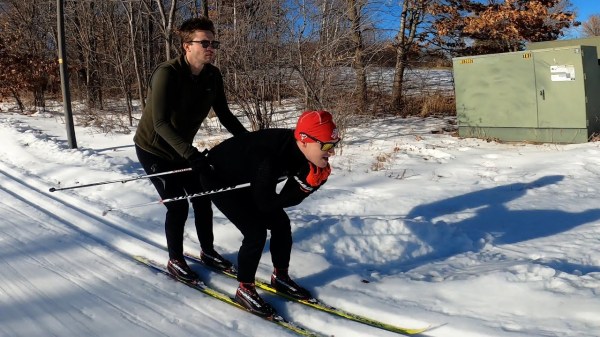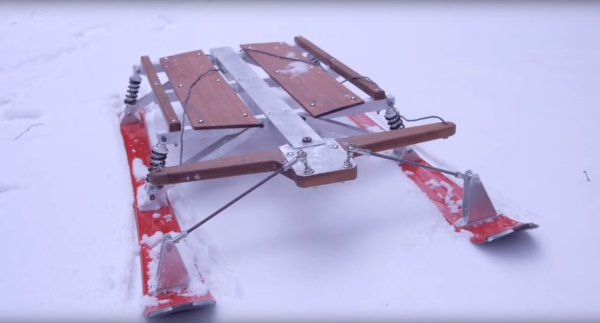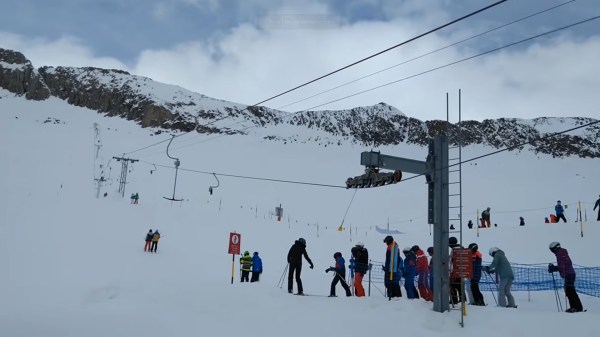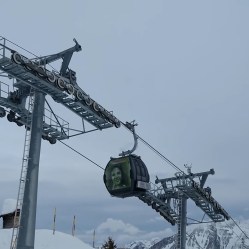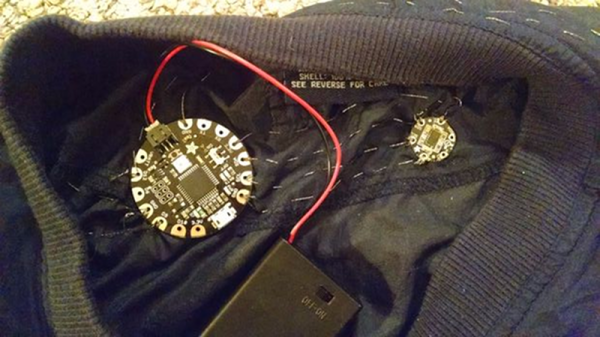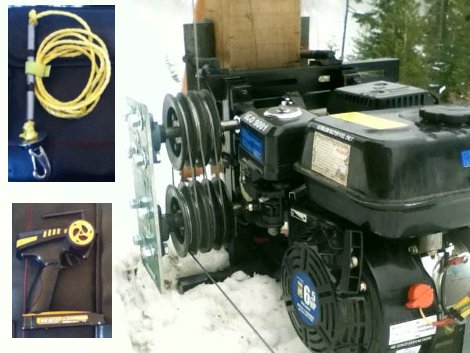A few years ago, [Jeremy Makes Things] built a rope tow in his back yard so his son could ski after school. Since the lifts at the local hill closed shortly after schools let out, this was the only practical way for his son to get a few laps in during the week. It’s cobbled together from things that [Jeremy] had around the house, and since the original build it’s sat outside for a few years without much use. There’s been a lot more snow where he lives this year though, so it’s time for a rebuild.
The power source for the rope tow is an old gas-powered snowblower motor, with a set of rollers and pulleys for the rope made out of the back end of a razor scooter. Some polyurethane was poured around the old wheel hub so that the rope would have something to grip onto. The motor needed some sprucing up as well, from carburetor adjustment, fuel tank repairs, and some other pieces of maintenance before it could run again. With that out of the way it could be hoisted back up a tree at the top of the hill and connected to the long rope.
This isn’t the first time [Jeremy] has had to perform major maintenance on this machine either. Three years ago it needed plenty of work especially around the polyurethane wheel where [Jeremy] also had to machine a new wheel bearing in addition to all the other work that had to go into repairing it that time. From the looks of things though it’s a big hit with his son who zips right back up the hill after each ski run. Getting to the tops of ski runs with minimal effort has been a challenge of skiers and snowboarders alike for as long as the sport has been around, and we’ve seen all kinds of unique solutions to that problem over the years.


